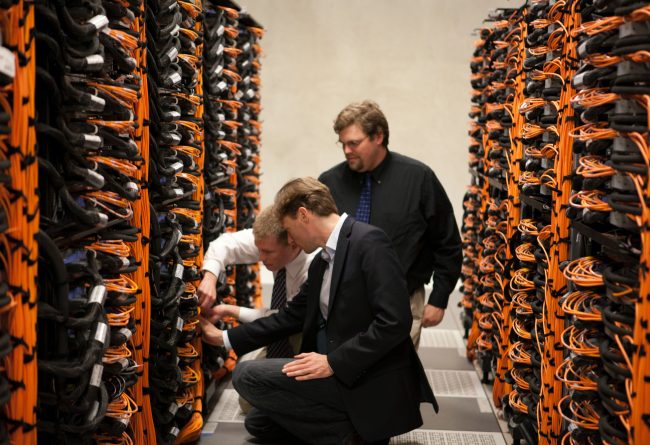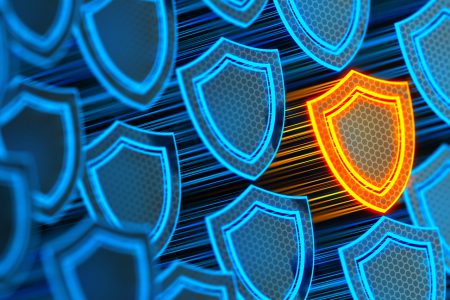How IoT Impacts Government Facilities Management

How IoT Impacts Government Facilities Management
What is the Internet of Things (IoT)?
Government facilities are filled with a collective network of connected devices. The technology of these devices enables them to communicate with each other and with cloud-based servers, this concept is known as the Internet of Things (IoT). Much like the internet used by humans to communicate, the IoT provides the basis for devices to collect relevant data, share it with other devices, and use this information to make intelligent operating decisions.
Many devices contain computer chips that can collect, process, and store data on their individual operations. Inventory and equipment are now tracked using RFID (radio-frequency identification), which are essentially low-power computer chips. Government facility infrastructure, from HVAC to lighting and security, can all be monitored, tracked, and optimized using IoT. Regardless of how they are implemented, these devices all use high-bandwidth telecommunications to communicate this important data to facilities managers and even exchange it among devices. Advances in Artificial Intelligence (AI) and Machine Learning (ML) have created devices that are more autonomous in nature and that can make intelligent responses to specific information.
For example, based on data, facility systems can take corrective action in the event of a power disruption, mechanical failure, or other infrastructure issues. These systems can also use IoT to alert facilities management to issues that must be escalated and include human involvement. Security cameras and other smart monitoring devices can use IoT to deduce whether a threat is occurring, and how to respond. This could include triggering an automatic alarm, calling for onsite human intervention, or even placing a 911 call for emergency police or fire services.
How is IoT used in facility management?
While IoT can be integrated into various applications, it has the potential to transform facilities management. IoT can help improve operational efficiencies, reduce costs, provide for easier scalability, and create a more agile working environment. IoT also impacts facility management manpower, as provides an accurate, objective, and automated process for collecting data, allowing for more efficient use of employee time in keeping operations running smoothly.
Much of this information is shared in real time, so facilities managers no longer must wait for manual reporting or analysis. Instead, such information is often accessible through a dashboard or other graphical user interface. This information can then be used in a variety of ways, from predictive maintenance tasks to immediately identifying the causes of system malfunctions and outages. Because such information is transmitted using broadband, facility management employees can access this information from smart devices, rather than being tied to a desk or an office.
IoT provides a level of around-the-clock, data-based facilities management. It can adjust HVAC systems to building usage, resulting in energy conservation. It can alert management when scheduled system predictive maintenance should occur, reducing the need for more costly repairs or work delays when systems need to be shut down. Though IoT is purely machine based, it provides efficiencies that can help facilities maintenance staff be more effective and efficient, especially in an era where worker and resource shortages are becoming more prevalent.
How does IoT have the potential to evolve government facility management?
Managers of government facilities are often required to adhere to strict budget requirements and when budget allocations change, must look for ways to reduce operating costs. Understanding IoT and the deep dive it can provide into operational data can truly change facilities management approaches.
Government is acutely interested in how IoT can positively impact its facility management. Many initiatives, from local to the federal level, encourage the implementation of IoT as it can improve the quality of public services, increase sustainability through more efficient infrastructure, and create more effective ways to manage limited government resources. IoT can help create scalability in government facility management, and new government facility development and is part of smart cities initiatives.
The challenges of IoT implementation in the public sector
Integrating IoT into facilities management provides a wide range of benefits, but there can also be challenges. Some government facilities cannot be retrofitted, with systems that are too old to integrate new IoT technologies. In some instances, the cost of integrating IoT technologies, whether through retrofit or new equipment, may be cost prohibitive and not possible with budgetary constraints.
Public sector and government facilities, depending on their use or affiliation, may require higher security to thwart cybersecurity attacks. Integrating IoT systems in these facilities may require additional costs or layers of security to successfully operate. Additional training, time allocation or the addition of dedicated staff to maintain IoT operations may be required. Buy-in from staff that is unfamiliar with how to use and benefit from IoT technology may also be a consideration.
The importance of effective IoT training
Enterprise Training Solutions offers several courses to upskill your staff on the understanding, implementation, and use of IoT in government facilities management. Our course offerings, which are available online and presented by professional course instructors, include the theory and concepts of IoT, Reliability Centered Maintenance, and other critical technologies that support government building and facility management efforts. Education can have a direct effect on how facilities management staff effectively implement IoT into the workplace, providing a strong return on your training investments.
For more information, visit www.enterprisetraining.com.


